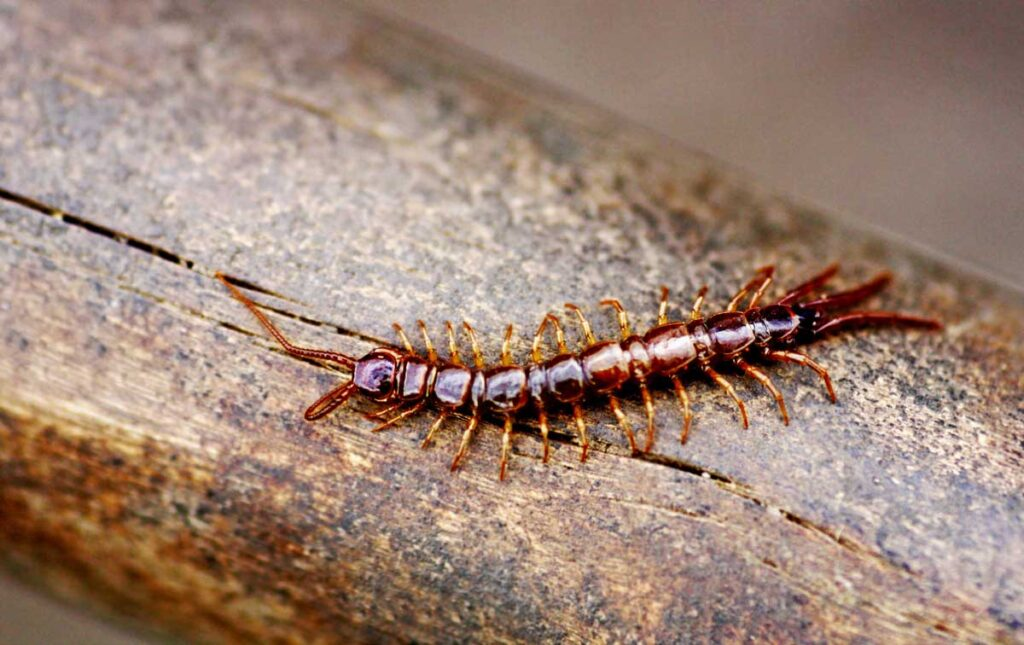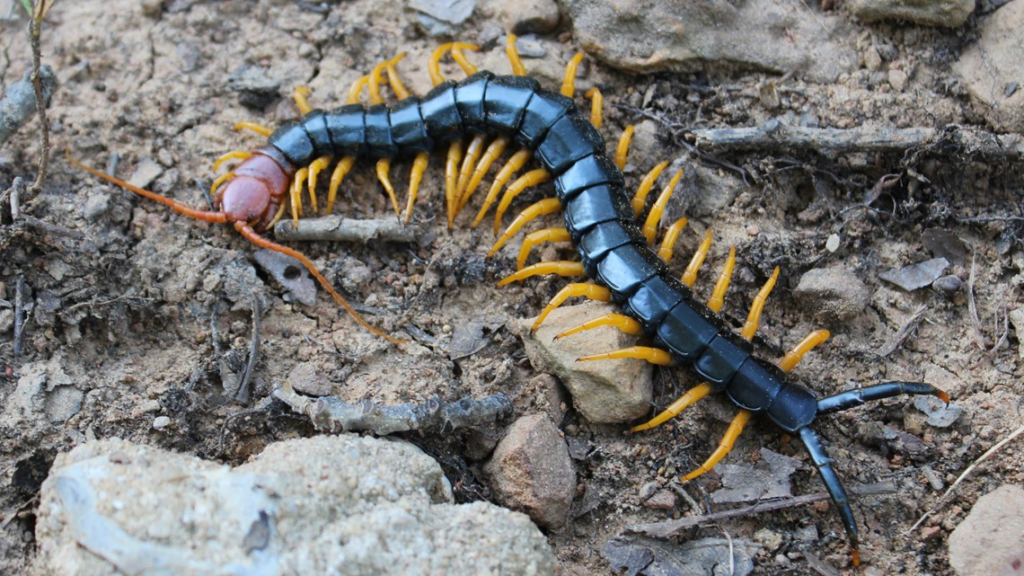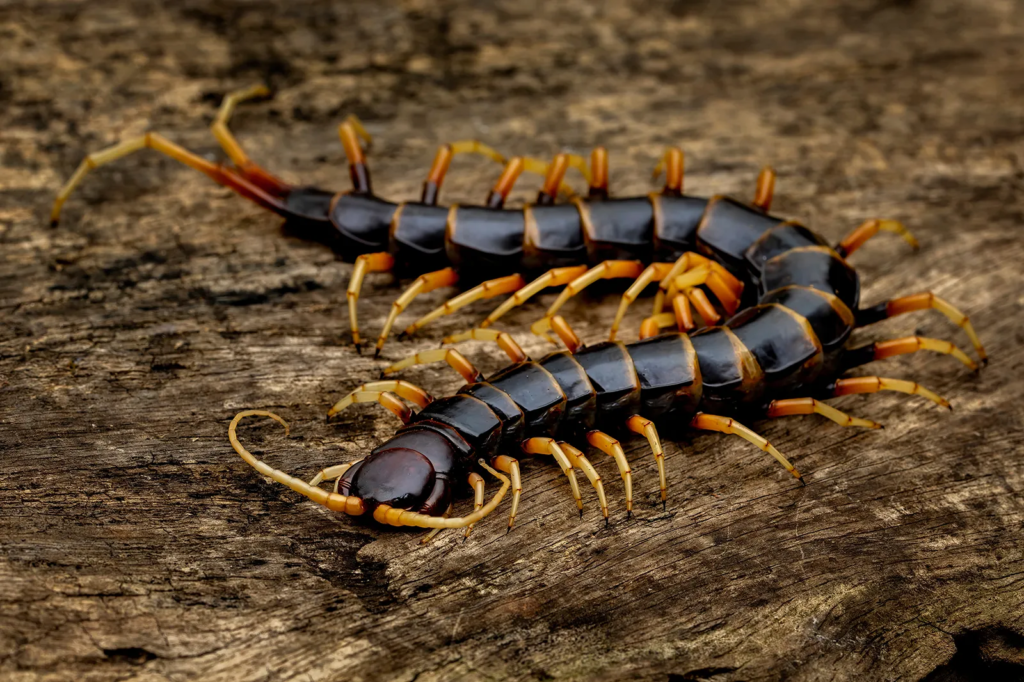How to Identify and Get Rid of House Centipedes
Have you ever turned on the bathroom light in the middle of the night to find a multi-legged creature scurrying across your floor? If it made you jump, you’re not alone. House centipedes, with their numerous legs and swift movements, can be startling visitors in your home. While they’re generally beneficial because they eat other pests, many homeowners prefer to keep these arthropods out of their living spaces.
This comprehensive guide will help you identify house centipedes, understand their habits, and implement effective methods to control and prevent infestations in your home.
What Are House Centipedes?
House centipedes (Scutigera coleoptrata) are arthropods belonging to the class Chilopoda. Unlike their outdoor relatives, house centipedes have adapted to living exclusively in human dwellings. Originally from the Mediterranean region, they’ve spread throughout the United States and can now be found in homes across the country.
Identifying House Centipedes
Before you can effectively control these creatures, you need to know what you’re dealing with. House centipedes have several distinctive features that set them apart from other household pests:
- Body Structure: Yellowish-gray with three dark longitudinal stripes
- Size: Adults typically measure 1-1.5 inches in body length
- Legs: 15 pairs of long, thread-like legs that can span up to 3-4 inches
- Antennae: Long and sensitive, extending from the head
- Movement: Extremely fast, capable of darting across surfaces at high speeds
House centipedes are often confused with millipedes or silverfish, but their distinctive leg arrangement and movement patterns make them uniquely identifiable. Unlike millipedes, which have two pairs of legs per body segment and move relatively slowly, house centipedes have one pair per segment and move with remarkable speed.
Life Cycle and Habits
Understanding the life cycle and behavior of house centipedes can help you develop more effective control strategies:
- Lifespan: House centipedes can live for up to 7 years
- Reproduction: Females lay 35-150 eggs per year
- Development: They go through about 5-6 molts before reaching adulthood
- Habitat: They prefer dark, damp areas like basements, bathrooms, and crawl spaces
- Activity: Primarily nocturnal, hunting at night and hiding during the day
- Diet: Predatory insects that feed on spiders, bed bugs, termites, cockroaches, silverfish, and other household pests
According to the United States Environmental Protection Agency (EPA), house centipedes are actually considered beneficial in some contexts as they help control other pest populations in your home.

Why You Might Want to Get Rid of House Centipedes
Despite their beneficial role as natural pest controllers, there are several reasons you might want to remove house centipedes from your home:
- Fear and Discomfort: Many people find the appearance of centipedes disturbing
- Painful Bites: Though rare, house centipedes can bite when handled, which may cause mild pain and swelling
- Indication of Other Pests: Their presence often signals that other pests are in your home
- Indication of Moisture Issues: They typically inhabit damp areas, which might point to moisture problems in your home
Prevention: Keeping House Centipedes Out
The most effective approach to house centipede control is prevention. By making your home less hospitable to these creatures, you can significantly reduce the likelihood of encountering them.
Reduce Moisture and Humidity
House centipedes require damp environments to survive. Eliminating excess moisture in your home can make it less attractive to them:
- Install dehumidifiers in basements, crawl spaces, and other damp areas
- Fix leaking pipes, faucets, and water fixtures promptly
- Ensure proper ventilation in bathrooms, kitchens, and laundry rooms
- Use exhaust fans when showering or cooking to reduce humidity
- Consider applying waterproof sealants in basements or crawl spaces
Eliminate Food Sources
Remember that house centipedes feed on other insects. Reducing the population of these prey insects will make your home less appealing to centipedes:
- Regularly clean your home to eliminate food debris that attracts other pests
- Store food in airtight containers
- Take out garbage regularly
- Address any existing pest problems (spiders, ants, cockroaches, etc.)
Seal Entry Points
House centipedes can squeeze through incredibly small openings. Sealing potential entry points can help keep them out:
- Caulk cracks and crevices in foundations, walls, and around windows and doors
- Install weather stripping around doors and windows
- Seal gaps around pipes and utility lines
- Repair or replace damaged window screens
- Install door sweeps on exterior doors
Reduce Clutter and Hiding Places
House centipedes prefer dark, secluded spaces. Minimizing these hiding spots can discourage them:
- Declutter storage areas, especially in basements and garages
- Keep firewood elevated and away from your home’s foundation
- Avoid storing cardboard boxes directly on basement floors
- Regularly rotate stored items to disturb potential hiding places
Methods to Get Rid of House Centipedes
If prevention measures haven’t worked and you’re dealing with house centipedes in your home, there are several control methods you can employ, ranging from natural remedies to chemical treatments.

Natural and Non-Toxic Methods
These approaches are environmentally friendly and safe for households with children and pets:
Diatomaceous Earth (DE)
Diatomaceous earth is a natural powder made from fossilized diatoms that damages the exoskeletons of insects and arthropods, causing them to dehydrate and die:
- Sprinkle food-grade DE in areas where centipedes are commonly seen
- Apply in thin layers along baseboards, in cracks, and around entry points
- Reapply after cleaning or if the area becomes wet
Sticky Traps
These can be effective for monitoring and catching house centipedes:
- Place sticky traps along walls, in corners, and near entry points
- Check and replace traps regularly
- Use these traps to identify high-activity areas
Essential Oils
Certain essential oils have been found to repel house centipedes:
- Tea tree oil
- Peppermint oil
- Eucalyptus oil
- Citrus oils
Mix 15-20 drops of essential oil with water in a spray bottle and apply to entry points, baseboards, and corners where centipedes might enter or hide.
Chemical Control Methods
If natural methods aren’t providing sufficient control, you might consider chemical options:
Insecticidal Sprays
- Apply residual insecticide sprays around the perimeter of your home
- Focus on entry points, baseboards, and dark corners
- Always follow label instructions carefully
Insecticidal Dusts
- Apply dusts in wall voids, cracks, and crevices
- These provide long-lasting protection in areas that are difficult to reach
- Examples include boric acid powder and synthetic pyrethroids
Professional Pest Control
For severe infestations, professional pest control services may be necessary:
- Professionals can identify entry points and harborage areas
- They have access to more potent formulations and application methods
- They can develop a comprehensive treatment plan tailored to your home
Comparison of House Centipede Control Methods
When deciding on the best approach for your situation, consider the following comparison of different control methods:
| Control Method | Effectiveness | Safety for Pets/Children | Environmental Impact | Duration of Effect | Cost |
|---|---|---|---|---|---|
| Moisture Control | High | Very Safe | None | Long-term | Moderate |
| Diatomaceous Earth | Moderate | Safe when used properly | Low | 1-2 months if dry | Low |
| Essential Oils | Low-Moderate | Varies by oil | Low | 3-7 days | Low |
| Sticky Traps | Low | Safe unless accessible | Low | Until full | Very Low |
| Insecticidal Sprays | High | Use caution | Moderate | 1-3 months | Moderate |
| Insecticidal Dusts | High | Use caution | Moderate | 6-12 months | Moderate |
| Professional Treatment | Very High | Varies by method | Varies by method | 3-6 months | High |
When to Call a Professional
While many house centipede situations can be handled with DIY methods, there are times when professional intervention is warranted:
- If you have a severe or persistent infestation
- If centipedes return despite your best efforts
- If you’re unable to identify and address the underlying moisture issues
- If you have a large home with multiple entry points or complex structural features
- If you’re concerned about using pesticides safely
Professional pest management specialists can conduct a thorough inspection, identify contributing factors, and implement a comprehensive treatment plan tailored to your specific situation.
Common Questions About House Centipedes

Are House Centipedes Dangerous?
House centipedes possess venom that they use to subdue their prey, delivered through modified front legs called forcipules. However, they rarely bite humans, and when they do, the reaction is usually mild—similar to a bee sting. They’re not considered dangerous to humans or pets.
According to the Centers for Disease Control and Prevention (CDC), house centipedes are not known to transmit any diseases to humans.
Do House Centipedes Damage Property?
Unlike termites or carpenter ants, house centipedes do not cause structural damage to your home. They don’t eat wood, fabric, or other household materials. Their diet consists exclusively of other small insects and arthropods.
Should I Kill Every House Centipede I See?
This is a personal decision. House centipedes are beneficial in that they consume other household pests like cockroaches, silverfish, and spiders. If you can tolerate their presence, they can actually help control other pest populations in your home. Many entomologists recommend capturing and releasing them outdoors rather than killing them.
How Fast Do House Centipedes Reproduce?
House centipedes have a relatively slow reproductive rate compared to many other household pests. A female typically lays 35-150 eggs per year, and development from egg to adult can take several months. This slower reproduction rate means that controlling house centipedes is generally more manageable than controlling fast-breeding pests like cockroaches or flies.
Maintaining a Centipede-Free Home
Once you’ve successfully addressed a house centipede problem, maintaining those results requires ongoing vigilance:
- Regular Cleaning: Vacuum and dust regularly, paying special attention to dark corners, baseboards, and under furniture
- Moisture Control: Continue monitoring and controlling moisture levels in your home
- Seasonal Inspections: Check for and seal new cracks or gaps that might develop, especially after seasonal changes
- Landscape Management: Keep vegetation trimmed away from your home’s foundation and eliminate debris near the house
- Consistent Monitoring: Place a few sticky traps in problem areas to monitor for new activity
Conclusion
While house centipedes might give you a momentary fright, understanding these creatures is the first step toward effectively managing them in your home. By implementing the prevention and control methods outlined in this guide, you can significantly reduce the likelihood of encounters with these many-legged visitors.
Remember that a multi-faceted approach—addressing moisture issues, sealing entry points, eliminating food sources, and using appropriate control methods—will yield the best results. With persistence and the right techniques, you can maintain a comfortable, centipede-free living environment for you and your family.
For more information on integrated pest management strategies, visit the EPA’s Integrated Pest Management Principles page.

